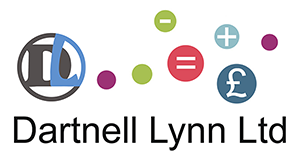It is generally accepted that it is more tax efficient for a director/shareholder to extract profits from a company as a dividend rather than a salary. To optimise your earnings my calculations suggest a 3:1 dividend/salary mix. Tax rates pretty much keep in alignment throughout the tax system be it sole trader, employee, corporation or dividend taxation. There are differences but it is swings and roundabouts all the way. The biggest difference is dividends do not attract NI contributions and it’s this that makes them a subject for discussion. So, what do you need to know to help you decide how to pay your taxes in a way that suits your business?

Tax in all circumstances is payable on earnings above your personal allowance. This will be different from person to person but generally (for 2014/2015) it will be 1000L meaning you can earn £10,000 before paying tax at 20% and then 40% tax once you earnings reach £41,865 (your personal allowance plus the £ 31,865 basic tax threshold).
National Insurance (NI) is payable in two different streams; firstly as an employee and secondly as an employer.
As an employee NI is payable once earnings reach the Primary Threshold (PT) which (for 2014/2015) is £7,956 and is due at 12% for each pound above the PT. There is also a Lower Earnings Limit (LEL) of £5,772 and NI is due at 0% (for 2014/2015) for each pound above the LEL and below the PT. Earnings above this LEL are taken into account as contributing towards benefits protection i.e. pension benefit but the contribution level is 0% and therefore no employee NI payment is due.
As an employer NI is due on employee’s earnings over what is called the Secondary Threshold (ST) which (for 2014/2015) is £7,956 and payable at 13.8%.
Company profits are subject to 20% corporation tax (for 2014/2015), any salary taken by a director and any employers national insurance payments will result in a reduction of profits for the company and therefore will not be subject to corporation tax.
Dividends are payable from current profits and reserves after 20% (for 2014/2015) corporation tax has been paid. Because tax has been paid at the company level shareholders do not pay tax on dividend payments that are below the basic rate threshold £ 31,865. Dividend income is added to any salary income received and, once your personal allowance is deducted, tax is payable at 22.5% on any dividend income above a total income of £31,865.
In short, if your personal allowance is £10,000 then you will pay tax at 22.5% on dividends over income of £41,865 or 40% in tax deducted from a salary. Your personal allowance will alter what you can earn before the 22.5% dividend tax applies and any personal calculation should take this into account.
Dividend income is subject to a notional 10% tax discount given to you because tax has been paid at the company level, it is the gross amount (dividend plus 10%) that is declarable as income on your tax return. This means the first £10,000 paid in dividend does not make good use of your personal allowance – it’s not actually tax free.
Dividends can be paid at any time but cannot be more than current year profits or previous year’s reserves.
Take a look at the data sheet ‘Salary or Dividend’ in the resources list , this lists salary and dividend options based on the tax deductions described here.
A few points to note – you should factor in any other taxes you may be subject to. As an employee you will be subject to adjustments in your personal allowance if the company makes any benefits available to you such as cars, medical insurance etc. The company will also be subject to Class 1A National Insurance if benefits to an employee are provided. These will make a difference to the calculations.
As a sole trader you will not be subject to this ‘benefit’ taxation and there are differences in allocating expenses to your overall profit which prevent a complete ‘like for like’ comparison.
Hopefully you have an idea of your options now but best talk to an accountant(me) to dot those i’s and cross those t’s.
